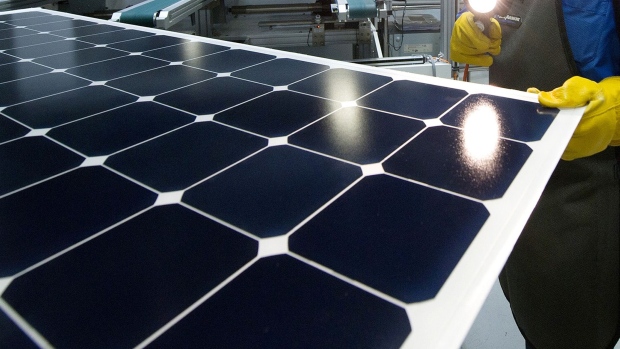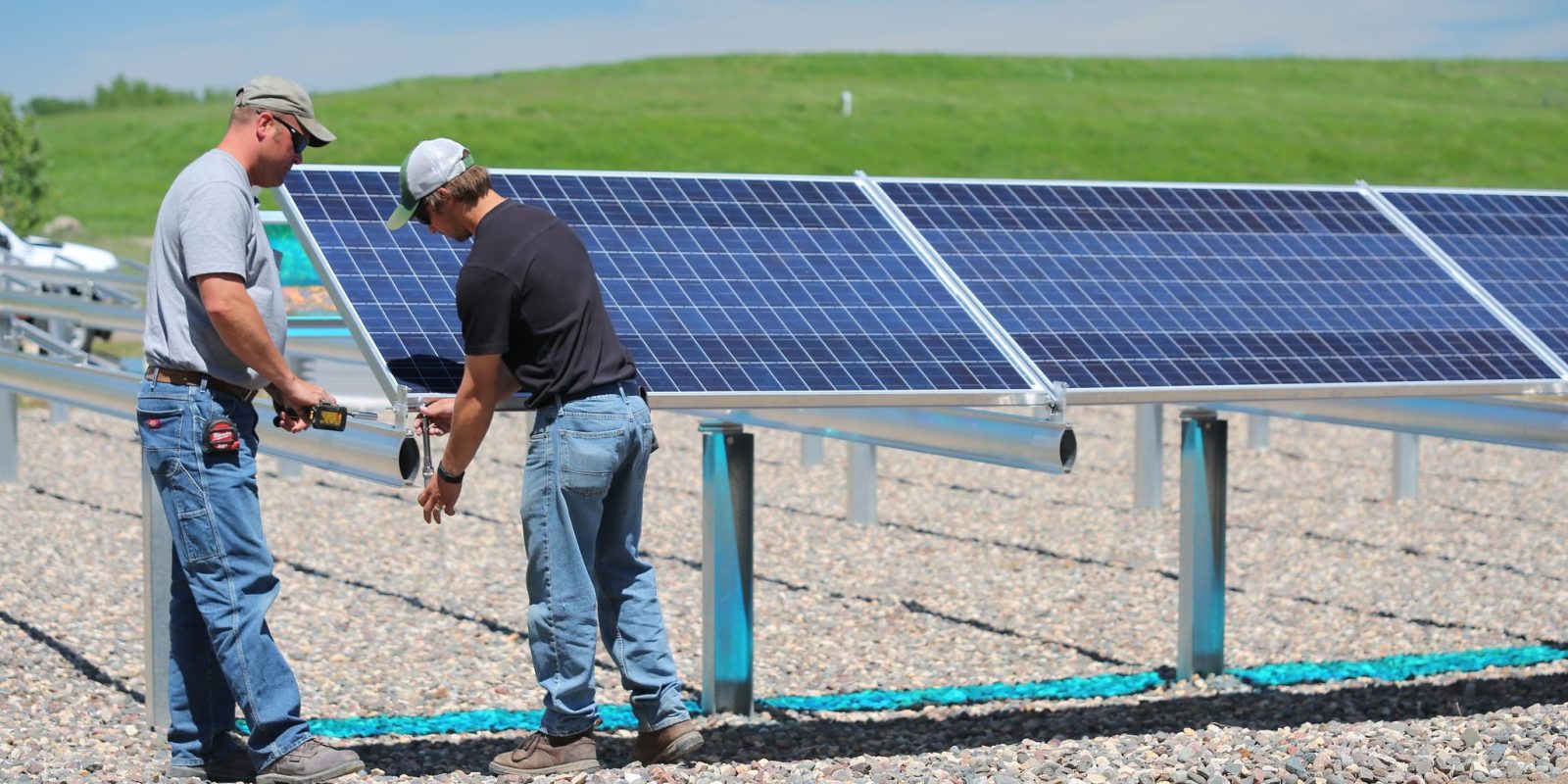Solar’s Surging US Job Market Leaves Women and Black Workers Behind
, Bloomberg News

(Bloomberg) -- The US solar industry made inroads at boosting employment levels for women and Black workers in the past two years, though one of the nation’s fastest-growing job markets still falls short on diversity.
Women made up 29.6% of US solar employees last year, according to an Interstate Renewable Energy Council report. That’s up from 26% of the industry in 2019, though lags the 47% of women in the overall US workforce. Black workers accounted for 8.2% of solar workers, a 0.5% gain from two years ago, though it lags the 12% national average, according to the report published Tuesday.
“Having higher numbers of women is still good progress in areas that traditionally have hired men -- construction-type jobs,” Larry Sherwood, president of the nonprofit group, said in an interview. “Obviously, it’s a long-term process to increase percentage numbers.”
The struggles of solar -- an industry long championed by progressives -- underscore the challenge of improving the gender makeup of industries heavy in construction jobs. The report found that two-thirds of the 255,000 US solar jobs last year were in installation and project development. Solar installers are seen as the fifth fastest-growing occupation in the US, according to the US Bureau of Labor Statistics.
The report also found that 31% of solar firms had strategies to boost the number of female hires, while 26% had initiatives to hire ethnic or racial minorities and only 8% of companies had programs to target LGBTQ+ hires.
Overall, solar jobs grew 9% last year as installations hit a US record. The industry has grappled with a series of challenges this year that have slowed projects, including trade and supply-chain constraints, which could hurt job growth.
©2022 Bloomberg L.P.
US solar jobs increased 9% in 2021 – here’s
how it breaks down by sector and state
Michelle Lewis
- Jul. 26th 2022 
Solar energy jobs were up in 47 states and increased 9% percent across the United States from 2020 to 2021, reaching a total of 255,037 solar workers, reports the independent nonprofit Interstate Renewable Energy Council (IREC).
According to IREC’s annual National Solar Jobs Census released today, this job growth took place in a year of record solar installations. Overall, the solar industry added 21,563 jobs in 2021, with more than two-thirds of these new jobs (14,350) at installation and project development firms.
Larry Sherwood, president and CEO at IREC, said:
America’s solar industry came back strong from the pandemic to expand the clean energy workforce across all regions of the country.
The future remains uncertain in light of the supply chain disruptions, trade issues, and stalled federal policy in the first part of 2022. There is potential for unprecedented job growth in the coming years if federal, state, and local leaders take action to expand clean energy use and address climate change.
Over the past decade, US solar employment has more than doubled from 105,145 jobs in 2011 to 255,037 jobs in 2021. The most significant growth has taken place in the installation and project development sector, where employment more than tripled since 2011 to reach 168,960 jobs in 2021.
When it comes to the total number of solar jobs at the state level, California continues to lead with 75,712 jobs as of 2021, followed by Florida (11,761 jobs), Massachusetts (10,548 jobs), New York (10,524 jobs), and Texas (10,346 jobs). Those states are followed by Arizona, Colorado, Nevada, and Ohio, each with 7,000 to 9,000 jobs.
California also led for the number of jobs added in 2021 (7,035 new jobs), followed by Massachusetts (+1,053 jobs), Nevada (+1,019 jobs), and Arizona (+932 jobs). Other strong growth states were Ohio, North Carolina, New Jersey, and Georgia, each with 800 to 900 new jobs.
The solar industry needs to up its game when it comes to diversity, equity, and inclusion. The report found that women made up just under 30% of the solar workforce in 2021, while Black employees made up 8% of the workforce, Latino or Hispanic workers made up 20%, and Asian workers made up 9%. Fewer than one-third of solar firms reported strategies to increase female, ethnic or racial minority, or LGBTQ+ hires.
And in a year with a tight labor market, 89% of firms reported difficulty finding qualified applicants, and 35% said it was “very difficult.” Only 31% of entry-level solar jobs require a bachelor’s degree, while 65% of firms provide on-the-job training.
According to the 2022 US Energy and Employment Report, clean energy jobs are growing in every sector, and jobs in net-zero emissions aligned areas made up approximately 40% of total energy jobs in 2021.
No comments:
Post a Comment